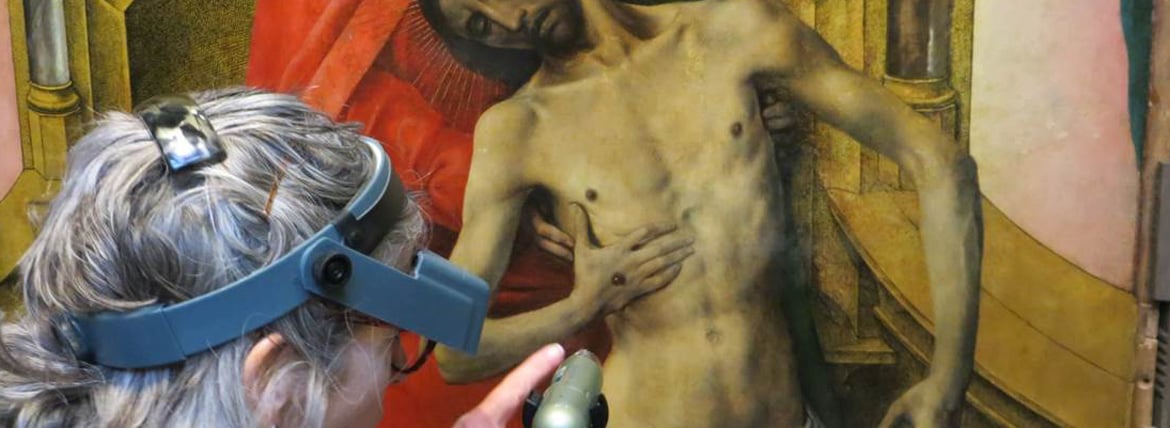
The Trinity Panels by Hugo van der Goes
Move to new location at Scottish National Gallery provides opportunity for study
Colour scheme
The initial study has also revealed clues to the original colour pattern of the panels.
In 1856 the art historian George Scharf studied the panels and recorded that the area beneath Christ’s feet was brown; however, the base of the throne appears markedly different in infra-red light. Beneath the flat brown paint a pattern of short vertical dashes is visible, clearly with a high carbon content.
When examined closely, a metallic layer can be seen beneath small losses in the paint layer – for example at Christ’s little toe. It is evident that the base of the throne was originally laid in with gold, silver, or tin leaf, but by the mid-nineteenth century this has been completely overpainted, most probably due to paint loss or tarnishing of the metal. Note also the very broad, liquid laying in lines of Christ’s toes in the underdrawing.
The gold leaf has been strengthened or regilded in many passages. Note the delicacy of the angel’s profile (right) with the tip of the nose and the eyelid extending over the gold. In comparison, Bonkil’s profile (left) is hard and angular where regilding has been laid right up to the edge of the paint. The flat reddish overgilding extends to the left and stops abruptly where the original gold and hatched lines emerge.







